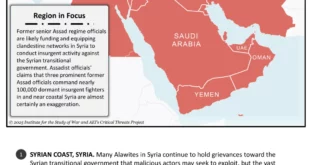TEHRAN — Iran’s president has thrown a new wrinkle into the nuclear debate by claiming his country is testing a more sophisticated type of centrifuge for enriching uranium — a device that could be used to more speedily create fuel for either power plants or for atomic weapons.
But some analysts familiar with the country’s technology said Monday that President Mahmoud Ahmadinejad could be deliberately exaggerating Iran’s capabilities, either to boost his own political support or to persuade the UN nuclear watchdog to back off.
Ahmadinejad, in a speech last week to students in northeastern Iran, claimed publicly and for the first time that the country was testing a P-2 centrifuge for enriching uranium. Such a device would be a vast improvement over the current P-1 centrifuges, which Iran announced last week it had used to do small-scale enrichment.
Iran previously had told the UN nuclear watchdog agency it had given up all work on P-2 centrifuges three years ago. It was not clear if Iran had been doing work all along on the more-sophisticated model, or had recently restarted efforts, or even if Ahmadinejad’s comments were accurate.
But either way, the president’s assertion is sure to raise concerns that Iran might have a more sophisticated programme than believed. The International Atomic Energy Agency (IAEA) and some independent groups have long questioned if Iran has a parallel, secret nuclear programme that is farther along.
“Our centrifuges are P-1 type. P-2, which has quadruple the capacity, now is under the process of research and test in the country,†the president told the students. The remarks went unpublished by the country’s official news agency and were only later found on the official presidential website.
Iran insists it is only building a civilian nuclear programme to satisfy electricity demand, but the United States and many of its allies in Western Europe and Japan say the Iranians want a nuclear weapon.
Iran has come under intense pressure in recent months to cease any efforts to enrich uranium, but its president has remained adamant it will press forward.
“He was likely posturing for his own political advantage and playing to national sentiment. We have to remember that the nuclear issue is very popular in Iran,†said Khalid R. Rodhan, an Iran nuclear expert at the Centre for Strategic and International Studies in Washington.
Anthony Cordesman, a top expert in the field also at CSIS in Washington, said there was no way to gauge if the president’s statement was true, or if it was true, how significant that would be.
“Just making a claim about individual technical developments doesn’t tell you a thing about what progress has really been made, or how it would change their operational capabilities,†Cordesman said.
Officials at the UN nuclear watchdog, the IAEA, in Vienna, Austria, refused to comment. But a Vienna-based diplomat familiar with the IAEA’s investigation of Tehran’s nuclear programme said Ahmadinejad’s comments about the P-2 would come up in discussions between Iranian and agency officials later this week.
The IAEA has believed for some time that Iran had obtained the plans for a P-2 centrifuge. Some international experts believe the designs were in Iranian hands perhaps as long ago as the late 1980s and certainly no later than the mid-1990s through a black-market network run by A.Q. Khan, considered the father of Pakistan’s nuclear bomb.
Iran previously had told the IAEA that the only work it had done on the P-2 design was carried out between 2002 and 2003 and was very limited. It also said all the work was halted in 2003, when it went back to the easier P-1 design.
But the IAEA has repeatedly questioned that claim and accused Iran of not coming clean on past efforts.
“We know that they have had the drawings for P-2 centrifuge and they’ve publicised that,†said Gary Sick, professor of international affairs at Columbia University and a former adviser to the US National Security Council.
“But up till now, they have said that they were not in fact pursuing that path. If in fact Ahmadinejad said that, it is a significant change,†Sick said.
Another diplomat in Vienna — who also demanded anonymity because he was not authorised to discuss the issue with media — said it was unclear how far along Iran’s P-2 work was. But if Ahmadinejad’s comments are confirmation that Tehran has secretly developed its P-2 programme over the past few years, that could mean that it will be able to produce weapons-grade enriched uranium faster and in greater quantities than thought up to now, the diplomat said.
The latest estimate from the CIA and other US intelligence agencies foresees that Iran could not create a bomb before the next decade. But that analysis based on Tehran’s known enrichment programme — which did not include P-2 efforts.
Significantly, state-run Tehran Radio did not report Ahmadinejad’s claim on the P-2 centrifuge last week. But it broadcast a commentary Monday claiming the issue had been raised by Washington to bolster its attempts to shut down the Iranian nuclear programme and hit Iran with sanctions if it does not comply with IAEA demands.
“The recent propaganda, about P-2 centrifuges, is an old American tactic that was launched by the US and Britain before any meeting on Iran’s nuclear programme,†the radio said.
That referred to an international gathering planned for Tuesday in Moscow where top officials of the five permanent members of the UN Security Council — Russia, the United States, China, France and Britain — and Germany were to discuss next steps on Iran.
The United States and Britain say that if Iran does not comply with the UN Security Council’s demand to stop uranium enrichment by April 28, they will seek a resolution that would make the demand compulsory.
Russia and China, which have strong economic ties with Iran, have opposed the US push for sanctions against Tehran.
 Eurasia Press & News
Eurasia Press & News


